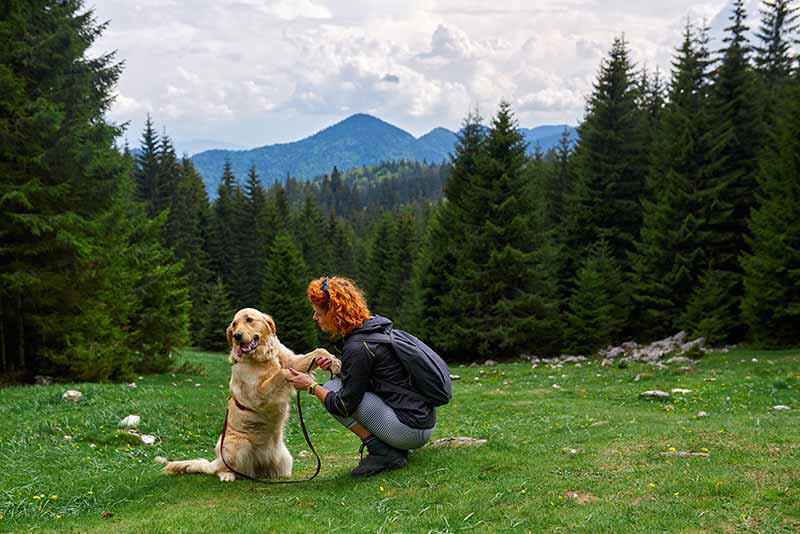 Most dogs love the great outdoors, but sometimes their excitement can get them into trouble. Indeed, the smells, sights, and sounds are simply intoxicating to a dog’s finely-tuned senses, and the consequences of their experiential methods can range from minor to downright disastrous. What would do if your dog got hurt miles away from help? Having a pet first aid kit goes a long way, but it’s also critical to be well-versed in the art of backcountry preparation.
Most dogs love the great outdoors, but sometimes their excitement can get them into trouble. Indeed, the smells, sights, and sounds are simply intoxicating to a dog’s finely-tuned senses, and the consequences of their experiential methods can range from minor to downright disastrous. What would do if your dog got hurt miles away from help? Having a pet first aid kit goes a long way, but it’s also critical to be well-versed in the art of backcountry preparation.
Before You Go
One of the best things you can do to ensure a safe hike with your dog is ascertain whether or not their health is up to it. We are happy to examine them and discuss possible issues they might experience while hiking, away from creature comforts, and fully exposed to the elements.
Because hiking can create problems your pet might not ordinarily experience, we can discuss common injuries and how to treat them while away from home. Also, it’s imperative that they’re fully vaccinated and up to date on the appropriate parasite prevention medication.
Map the Terrain
Having a firm grip on poisonous plants and predatory animals is crucial to a safe hike. If your dog is off-leash, they can encounter dangerous critters. Interfering between fighting animals is particularly risky (don’t forget your bear spray or another method of self-protection), but once a scuffle is over, inspect your pet for puncture wounds on the face, neck, legs, and back.
Cleanliness Counts
Your pet first aid may contain a muzzle. This can be helpful when trimming hair near injuries and cleaning wounds with antiseptic, as your pet may bite in self-protection. Apply pressure to bandaged wounds until bleeding stops. If it continues, do not remove blood soaked cloth. Instead, apply more cloth and pressure. Get help immediately.
Danger Signs
Hopefully your pet won’t experience any of the following, but these are the risks of hiking together:
- Broken bones
- Sprain
- Heat exhaustion, dehydration, and heat stroke
- Torn or cut paw pads
- Cuts, scrapes, abrasions, and campfire burns
- Poisoning
What Belongs in a Pet First Aid Kit?
Aside from the muzzle and cloths mentioned above, your pet first aid kit should contain:
- Gauze or bandage wrap
- Medications, such as Benadryl for allergic reactions to plants or bugs.
- Tools, like tweezers, pliers, or a simple blade to pull out glass, thorns, quills, and more (note: removing a tick requires special care; know what you need before you go)
- Emergency blanket
- Saline solution to wash dirt or debris from the eyes
- Styptic swabs to stop bleeding
- Gloves
- Whistle and lights
- Treats
Remember that your dog must have frequent breaks in the shade with cool water. Keep a close eye on their behavior and turn around before they get too tuckered out.
As always, if you have any questions or concerns, we welcome your call.
Recent Posts
About Us
We know that choosing the right veterinarian for your pet (and you) can be a challenge. Yet, with our stress-free handling, our long-term, experienced staff, and a state-of-the-art facility, we make the decision an easy one!
